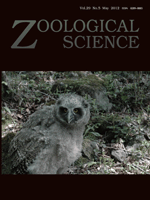We used radio-telemetric monitoring and statistical models to investigate habitat associations of the endangered Korean ratsnake (Elaphe schrenckii) in a mountain region of Woraksan National Park based on the data collected from July 2007 to April 2009. We evaluated a priori models at landscape scales that incorporated natural and artificial variables to explain ratsnake presence and absence using geographic information system (GIS) databases. We generated models using logistic regression combined with Akaike's information criterion (AIC) to determine which variables are most important. The best-ranked model predicted that the ratsnakes are likely to use areas with high annual solar radiation and that they are closer to streams, coniferous and mixed forests, farmland, houses, and barren ground. We next evaluated the model by applying it to an internal and an external dataset, where the model showed high power of prediction and discrimination on the internal dataset with estimated mean probability of 94% while showing suitability as a predictive model on the external dataset with 64% probability. The present study suggests that a created habitat model can provide valuable contributions to conservation and management efforts directed towards ratsnake populations.
How to translate text using browser tools
1 May 2012
Large-Scale Habitat Association Modeling of the Endangered Korean Ratsnake (Elaphe schrenckii)
Jung-Hyun Lee,
Daesik Park,
Ha-Cheol Sung
ACCESS THE FULL ARTICLE

Zoological Science
Vol. 29 • No. 5
May 2012
Vol. 29 • No. 5
May 2012
AIC
Elaphe schrenckii
endangered species
GIS
habitat model
Korean ratsnake




